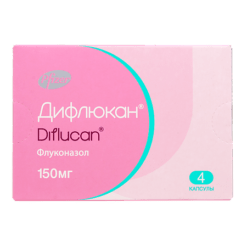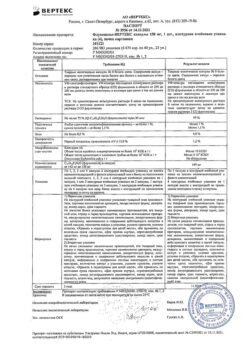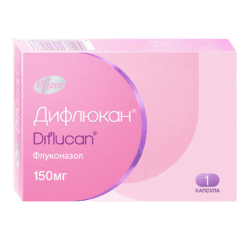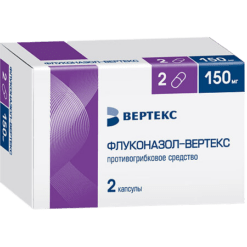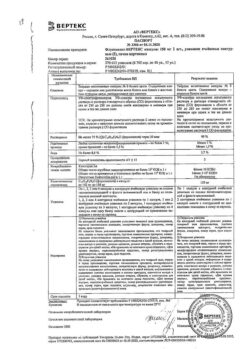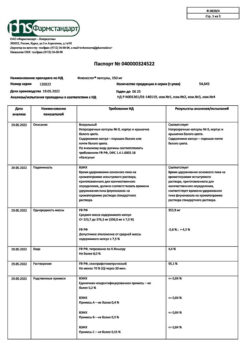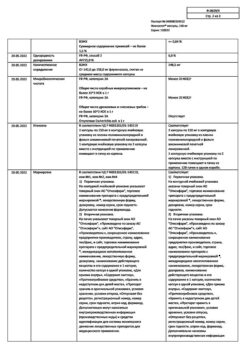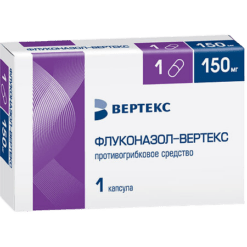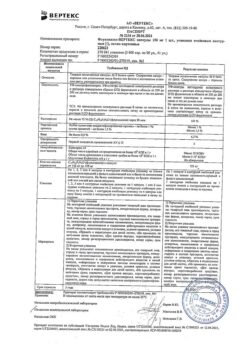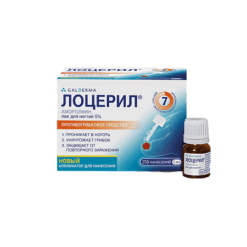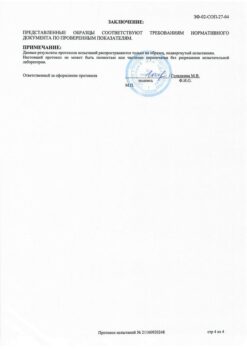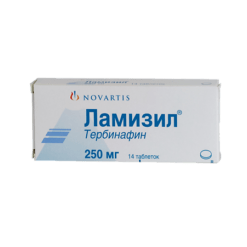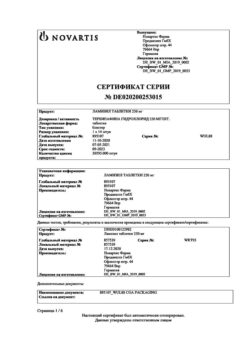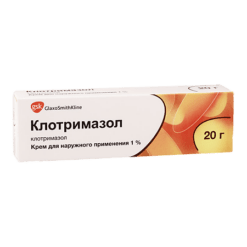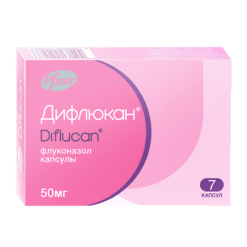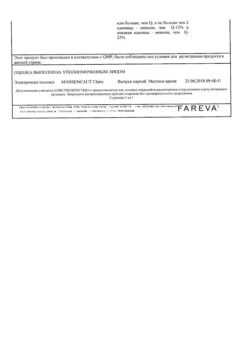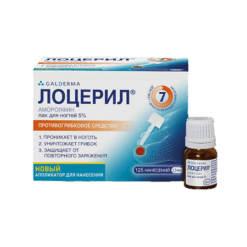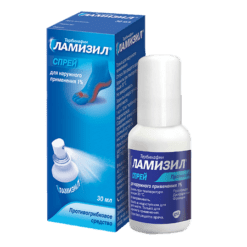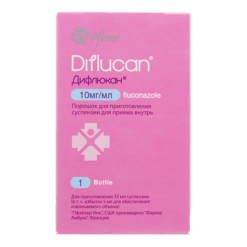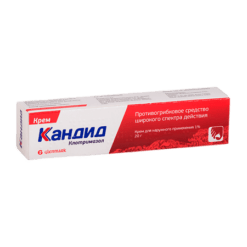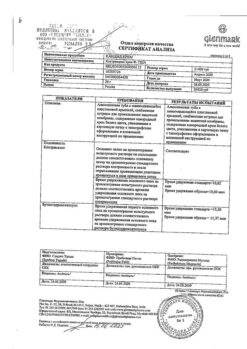No products in the cart.
Fluconazole, 150 mg capsules 4 pcs.
€1.00
Out of stock
(E-mail when Stock is available)
Description
- cryptococcosis, including cryptococcal meningitis and other localizations of this infection (including lung, skin), both in patients with normal immune response, and in patients with various forms of immunosuppression (including AIDS patients, organ transplant patients). In AIDS patients, in organ transplant patients); the drug may be used for prevention of cryptococcal infection in AIDS patients;
- Generic candidiasis, including candidemia, disseminated candidiasis and other forms of invasive candidiasis infections (infections of the peritoneum, endocardium, eyes, respiratory and urinary tract). Treatment may be carried out in patients with malignant tumors, patients in intensive care unit, patients undergoing cytostatic or immunosuppressive therapy, as well as in the presence of other factors predisposing to the development of candidiasis;
- candidosis of mucous membranes, including. Oral and pharyngeal candidiasis (including atrophic oral candidiasis associated with the wearing of dentures), esophagus, non-invasive bronchopulmonary candidiasis, candiduria, skin candidiasis; prevention of relapse of oropharyngeal candidiasis in AIDS patients;
- Genital candidiasis: Vaginal candidiasis (acute and chronic recurrent), prophylactic use to reduce the recurrence of vaginal candidiasis (3 or more episodes per year); Candida balanitis;
- Prevention of fungal infections in patients with malignancies who are predisposed to such infections due to cytostatic chemotherapy or radiation therapy;
- dermal mycoses, including mycoses of the feet, body, groin; pityriasis, onychomycosis; candidiasis of the skin;
- deep endemic mycoses, including coccidioidomycosis, paracoccidioidomycosis, sporotrichosis and histoplasmosis in patients with normal immunity.
Active ingredient
Active ingredient
Composition
Composition
1 capsule contains:
Active substance: fluconazole150 mg;
Ancillary substances: lactose monohydrate; pregelatinized starch; colloidal anhydrous silicon dioxide; magnesium stearate; sodium lauryl sulfate.
How to take, the dosage
How to take, the dosage
Internal.
Adults and children over 15 years of age (body weight over 50 kg)
Interaction
Interaction
The use of fluconazole with warfarin increases PV (by 12% on average). In this regard, it is recommended to carefully monitor the PV in patients receiving the drug in combination with coumarin anticoagulants.
Fluconazole increases plasma elimination half-life of oral hypoglycemic agents – sulfonylurea derivatives (chlorpropamide, glibenclamide, glipizide, tolbutamide) in healthy subjects. Concomitant use of fluconazole and oral hypoglycemic agents in diabetic patients is allowed, but the physician should take into account the possibility of hypoglycemia.
The concomitant use of Fluconazole and phenytoin may increase plasma concentrations of phenytoin to a clinically significant degree. Therefore, if co-administration of these drugs is necessary, phenytoin concentrations should be monitored with dose adjustments to maintain drug levels within the therapeutic interval.
Combination with rifampicin decreases AUC by 25% and shortens plasma elimination half-life of fluconazole by 20%. Therefore, in patients receiving rifampicin concomitantly, it is reasonable to increase fluconazole dose.
The monitoring of cyclosporine blood concentrations in patients receiving fluconazole is recommended, because the use of fluconazole and cyclosporine in patients with renal transplantation (administration of fluconazole at a dose of 200 mg/day) leads to a slow increase of cyclosporine plasma concentration.
Patients who receive high doses of theophylline or who are likely to develop theophylline intoxication should be monitored for early detection of symptoms of theophylline overdose, because fluconazole administration leads to a decrease in the average plasma clearance rate of theophylline.
In concomitant use of fluconazole with terfenadine and cisapride, adverse cardiac reactions, including paroxysms of ventricular tachycardia (torsades de points) have been described.
The concomitant use of fluconazole and hydrochlorothiazide may increase fluconazole plasma concentrations by 40%.
There have been reports of interaction of fluconazole and rifabutin with increased serum levels of the latter. There have been cases of uveitis during concomitant use of Fluconazole and rifabutin. Patients receiving rifabutin and fluconazole concomitantly should be closely monitored.
In patients receiving a combination of fluconazole and zidovudine an increase in concentration of zidovudine is observed, which is caused by a decrease in conversion of the latter to its main metabolite, therefore an increase in side effects of zidovudine should be expected.
Enhances concentrations of midazolam, due to which the risk of psychomotor effects increases (more pronounced when using fluconazole orally than intravenously).
Enhances tacrolimus concentrations, due to which the risk of nephrotoxic effects increases.
Special Instructions
Special Instructions
Treatment must be continued until clinical and hematological remission occurs. Premature discontinuation of treatment leads to relapses.
By treatment, blood parameters, renal and hepatic function should be monitored. If renal and hepatic function abnormalities occur, the drug should be discontinued.
In rare cases the use of fluconazole has been accompanied by toxic liver changes, including with fatal outcome, mainly in patients with severe comorbidities. In the case of hepatotoxic effects associated with fluconazole, no clear dependence on the total daily dose, duration of therapy, sex and age of the patient was noted. Hepatotoxic effects of fluconazole were usually reversible; their signs disappeared after discontinuation of therapy. If clinical signs of liver damage appear, which may be associated with fluconazole, the drug should be discontinued.
AIDS patients are more prone to develop severe skin reactions with many drugs. In cases where patients with superficial fungal infections develop a rash and it is considered definitely related to fluconazole, the drug should be discontinued. If a rash develops in patients with invasive/systemic fungal infections, they should be closely monitored and fluconazole should be discontinued if bullous changes or erythema multiforme appear.
Caution should be exercised if fluconazole is taken concomitantly with cisapride, rifabutin or other drugs metabolized by the cytochrome P 450 system.
Contraindications
Contraindications
Side effects
Side effects
Digestive system disorders: decreased appetite, changes in taste, abdominal pain, vomiting, nausea, diarrhea, flatulence, rarely – disorders of liver function (jaundice, hepatitis, hepatonecrosis, hyperbilirubinemia, increased alanine aminotransferase activity, aspartate aminotransferase activity, increased alkaline phosphatase activity, hepatocellular necrosis), incl.including severe.
Nervous system disorders:headache, dizziness, excessive fatigue, rarely – seizures.
Hematopoietic organs: rarely – leukopenia, thrombocytopenia (bleeding, petechiae), neutropenia, agranulocytosis.
Allergic reactions: skin rash, rarely – erythema multiforme (including Stevens-Johnson syndrome), toxic epidermal necrolysis (Lyell syndrome), anaphylactoid reactions (including angioedema, facial edema, urticaria, skin itching).
Cardiovascular disorders:increased QT interval duration, ventricular fibrillation/thrash.
Others: Rarely – impaired renal function, alopecia, hypercholesterolemia, hypertriglyceridemia, hypokalemia.
Overdose
Overdose
Symptoms:Hallucinations, paranoid behavior.
Treatment:symptomatic – gastric lavage, forced diuresis. Hemodialysis for 3 h reduces plasma concentrations by approximately 50%.
Similarities
Similarities
Additional information
| Weight | 0.010 kg |
|---|---|
| Shelf life | 2 years. |
| Conditions of storage | In a dry, light-protected place at 15-25 °C. |
| Manufacturer | Ozon, Russia |
| Medication form | capsules |
| Brand | Ozon |
Other forms…
Related products
Buy Fluconazole, 150 mg capsules 4 pcs. with delivery to USA, UK, Europe and over 120 other countries.


